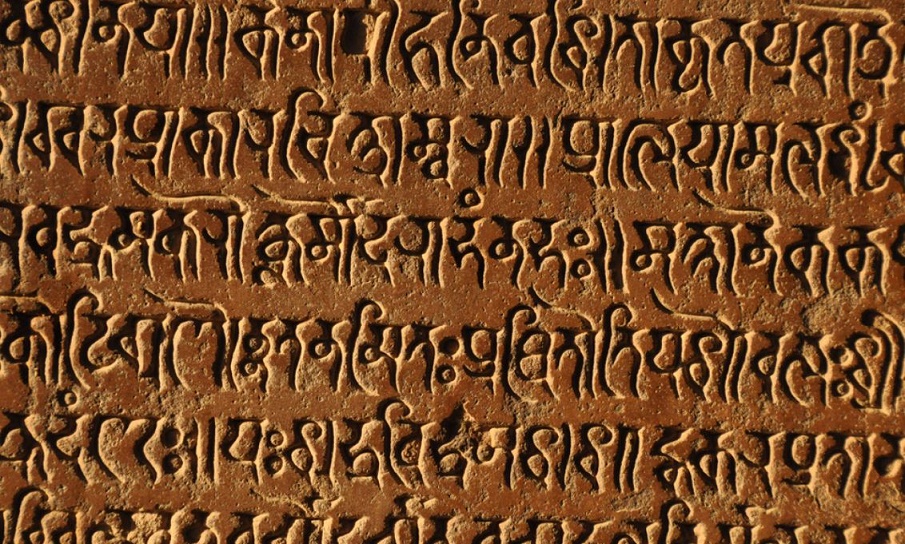Whenever Sanskrit is mentioned people call it ‘divine language’ respectfully. But this does not satisfy everyone. It is not only divine language it equally belongs to this world as much. It is indeed a divine language, the language of the common man, an ancient language, a living language, a national language and of course, a language of correspondence.
Consequently the country is losing its spiritual strength without Sanskrit. Dharma and culture are the soul and the life of India. Sanskrit is the vehicle of culture. Sanskrit Ganga flows for ever as a language of culture – a stream that reaches everyone no matter where he or she is. It is more appropriate to call it a cultural language. We should carry the message that ‘Sanskrit is the language of Indian culture’. Sanskrit will flourish again with this conviction among people.
Is Sanskrit a difficult language?
There is a biased view about Sanskrit in modern times. Actually, for sometime now, Sanskrit has ceased to be a spoken language. This tradition is lost due to extraneous circumstances and this has created a misconception about Sanskrit among our people. Any language is neither difficult nor easy. Usually a language has two levels. The spoken language is simple whereas the literary language needs study. There are many reasons to make one feel that Sanskrit is a difficult language. The problem lies in the teaching method. Before the arrival of English people in India the educational institutions were all pathashalas where Sanskrit was the medium of instruction. Sanskrit was a common spoken language among the people. The invaders declared that Sanskrit is a dead language. Even while learning Sanskrit, grammatical translation method was stressed. Even after the exit of the British the old methods of study in the field of Sanskrit continue.
Now Sanskrit learning has become difficult on account of the old pattern of following the grammatical method. The same old texts continue and people are ignorant about the simplicity of the language. Besides, the scholarly language used by scholars in teaching as well as discussions make one feel that Sanskrit is difficult. Since Sanskrit is not a language of the common man one has to memorise the declensions and conjugations. Perhaps the state of affairs will improve if everyone starts speaking in Sanskrit.
Some say that Sanskrit should be simplified. Simplification means changing the very structure of the language. But there is no need for this. It is possible to speak in Sanskrit within the framework of Panini’s grammar. If we change the structure itself the uniqueness and grandeur of the language will be lost. Therefore it should be our endeavour to make Sanskrit a spoken language while maintaining its uniqueness and simplicity.
The arts scenario
In a classical dance repertoire, stotras are employed for opening numbers, hymns are sung as closing mangalam. Be it any well- known composer, the first choice seems to be their compositions, other than in Sanskrit for major portions of emotions like love/sringara and devotion. The argument is that audiences are familiar with these spoken languages hence a dancer has to go for them especially because classical dance has evolved out and also away from being a Sanskrit theatre component. It is commonly argued that Sanskrit is best as a Devavani and less understood in contemporary times. Barring the Gita Govinda/Ashtapadis, we hardly find any songs that have been suitably adopted for classical dances. We often find dancers choosing dialects or even foreign languages for wider acceptance but the fact is that if Sanskrit is chosen, there will emerge a common platform with words that can be reckoned by several people. If one does wish to revive and propagate this great language, then attempts in this direction have to be made by artists as dance forms can contribute a great deal towards collective consciousness and change.


















Discussion about this post